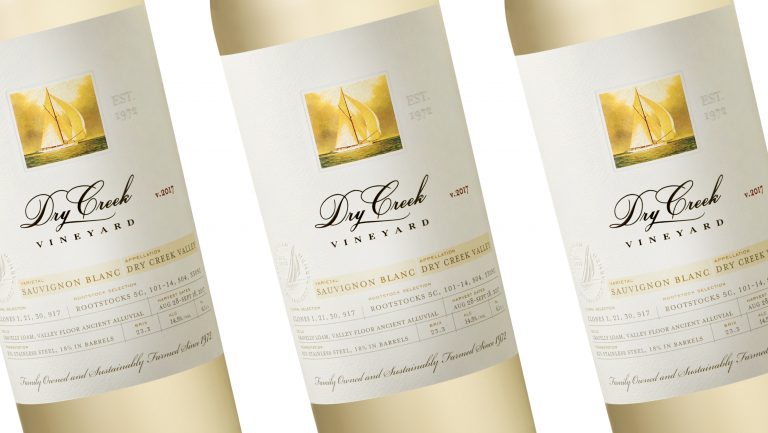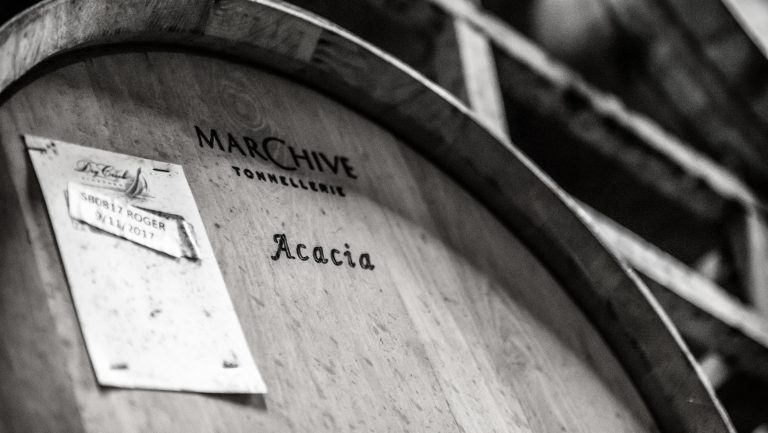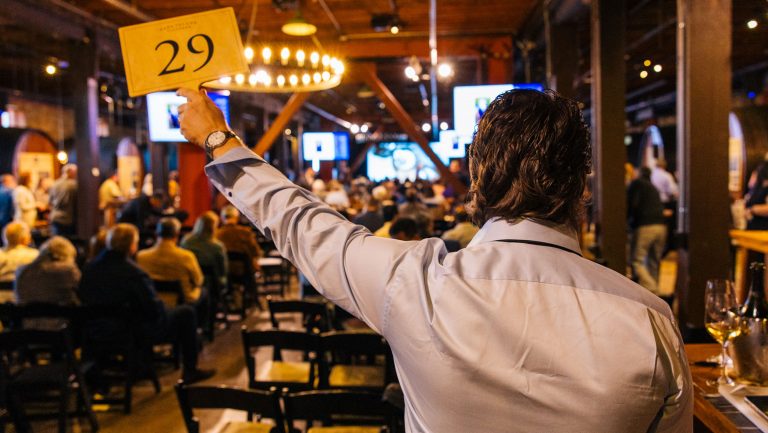Acacia wood barrels have been used in Europe for years, but this alternative to traditional oak is now gaining some traction among American winemakers, who are starting to use acacia barrels in the production of certain white wines. The appeal of acacia barrels lies not so much in the flavors they impart but rather the lack of flavors. Compared with spicy French or bombastic American oak, acacia’s contribution is mostly textural. Tim Bell, the winemaker for Dry Creek Vineyard in Healdsburg, California, says that’s precisely what drew him to the uncommon wood five years ago, when he was looking for an alternative to French oak that would let the fresh, clean aroma of his Sauvignon Blanc shine through.
“The first and most important thing to me is [acacia] doesn’t impart toastiness,” Bell says, even though his acacia barrels are lightly toasted (French oak, he points out, is usually toasted medium to medium plus, giving stronger flavor notes). “It still allows the beautiful fresh aromatics of the grape to be the star, but what it does bring is a little bit of a subtle waxy texture, which adds a bit of body” to an otherwise light style of white wine.
Dry Creek’s Sauvignon Blanc is predominantly fermented in stainless steel, with 18 percent of the juice fermented for 10 days in wood. Ten percent of that is fermented in acacia, 5 percent is fermented in neutral French oak that’s already lost most of its toasty flavors to the winery’s Chardonnay, and 3 percent is fermented in chestnut—yet another European wood not commonly used in American winemaking. Bell says chestnut’s strong vanilla cream quality would be “too much on its own, but I kind of like it here because Sauvignon Blanc has a lot of citrus fruit, and [I like] adding a little subtle creaminess in there.”

Don’t miss the latest drinks industry news and insights. Sign up for our award-winning newsletters and get insider intel, resources, and trends delivered to your inbox every week.
Bell buys his acacia barrels from a couple of sources, including Barrel Builders in Calistoga, California. At $830 to $875 per barrel, acacia’s pricing falls between American oak—typically $400 to $550 a barrel—and French oak barrels, which start around $900 and can easily exceed $1,000 a pop.

Barrel Builders owner Phil Burton says the acacia used in winemaking is technically from black locust—Robinia pseudoacacia—a tree that’s native to the southeastern U.S. but was exported to Europe about 500 years ago. He gets all of his acacia barrels from French coopers working with French-grown trees, and doesn’t know of any coopers using American acacia. Compared with nearly 5,000 French and American oak barrels, plus several thousand used oak barrels, Burton sells just 100 or so acacia barrels a year. He doesn’t expect that number to skyrocket anytime soon—in part because he thinks acacia will remain a small portion of a wine’s processing for the sake of flavor and appearance. “The 100-percent-acacia-barrel samples I’ve tasted—I don’t like them very much,” he says. “They get a chemical note to me and have the color of pee. The wood is yellowish and transmits that to the wine.”
Chateau Montelena Winery, also in Calistoga, was one of the first wineries to ask Burton about acacia. Like Dry Creek, Chateau Montelena uses a small number of acacia barrels to help enhance the mouthfeel of its Sauvignon Blanc only. “Acacia’s impact is mostly textural, although it can have a subtle effect on the wine’s color,” says Montelena winemaker Matt Crafton. “Aroma and flavor characteristics are minimal at the toast levels we use.”
Cinder Wines, in Garden City, Idaho, used to make its Chardonnay with up to 10 percent new French oak barrels (the rest was neutral oak and stainless steel) but is now on its third year replacing half those barrels with new acacia. Starting with the 2018 vintage, the winery is phasing out new French oak in favor of 10 percent acacia—at the rate of one or two new barrels per year. “One thing that’s nice about using oak with Chardonnay is that the oak helps build up the wine so it [has more] longevity,” says Cinder’s winemaker, Melanie Krause, who got her start in enology as an assistant winemaker at Chateau Ste. Michelle in Woodinville, Washington. “Then you have the flavor that it imparts, which is controversial: Some love it, some hate it, and I’m kind of in the middle. So the acacia helps me make Chardonnay that’s powerful and graceful, with much more subtle aromas—while still imparting those amazing and somewhat mysterious properties of wood that make wine age so well.”
Montelena’s acacia barrels last up to five years. Dry Creek buys a couple of new acacia barrels each year, but its oldest ones have been used now for five vintages, and Bell doesn’t know yet how long they’ll last. “We’ll probably think about replacing them after another couple of vintages,” he says. The acacia barrels are used only for three to four months at a time, a relatively short period, so if they still seem fresh at the end of a batch, Bell sanitizes them with a steamer to extend their usefulness. “Your main concern with older barrels [in general] is you get a buildup of some kind of spoilage microorganism because they’re hard to clean.” He says there’s a possibility near the end of the acacia’s life span that he’d switch to using it as an aging vessel for red wine, but most likely he’ll just sell them for use as planters or barrel furniture.
Bell doesn’t think any customers could ever detect acacia’s influence in a particular wine, but he does see growing appreciation for the end result. “People have noticed this is a different wine,” he says, “and stylistically they really like it, even if they can’t tell you exactly why. The flavor profile has gone in a direction where we’re starting to grow production of that wine a bit because it’s a hit with a lot of people.”

Dispatch
Sign up for our award-winning newsletter
Don’t miss the latest drinks industry news and insights—delivered to your inbox every week.
Adam H. Callaghan is the editor of Eater Seattle and a freelance writer and editor specializing in food, fermentation, beverages, and travel. He hails from Maine and lives in Seattle with his partner, Stasia, and a variety of bubbling Ball jars.







